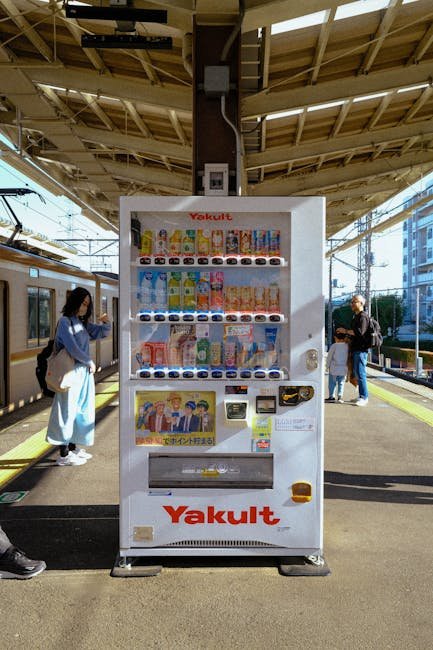Key Takeaways
- Both “Automatized” and “Automated” describe geopolitical boundaries shaped by processes of enforcement and recognition, yet they differ subtly in context and implication.
- “Automatized” boundaries often imply a gradual institutionalization or habitual establishment of territorial limits through repeated practice or customary acceptance.
- “Automated” boundaries generally refer to borders that are enforced or recognized through formal mechanisms or systems that function with minimal human intervention.
- The distinction between these terms highlights differing modes of sovereignty assertion and boundary management within geopolitical frameworks.
- Understanding these nuances is crucial for analyzing border disputes, state control, and international relations where boundary definition plays a core role.
What is Automatized?

Automatized boundaries refer to geopolitical limits that have become established through repetitive, institutionalized practices rather than immediate formal enforcement. These borders often arise from long-term habitual acceptance by governing bodies and local populations.
Institutionalization Through Repetitive Practice
Automatized boundaries develop when states or local authorities repeatedly enforce certain territorial limits without necessarily invoking explicit, formal treaties. Over time, this consistency leads to tacit recognition of these borders by neighboring entities and international actors.
This process can be seen in regions where historical movement or control gradually solidifies into recognized boundaries, such as traditional tribal lands becoming state borders after sustained local governance. The reliance on habit and precedent rather than formal codification distinguishes automatized borders from others.
Customary Acceptance and Local Recognition
Many automatized boundaries gain legitimacy through customary acceptance by local communities and governments, often without written agreements. This informal recognition can create de facto borders respected by all parties involved, even if not officially documented.
For example, some African boundaries originate from colonial-era customs that evolved into present-day borders without clear legal demarcation. The acceptance by inhabitants and local authorities reinforces the stability of these automatized boundaries.
Gradual Evolution of Territorial Limits
Rather than abrupt establishment, automatized boundaries emerge from a slow evolution of territorial control and governance patterns. This gradual development often reflects historical settlement, economic zones, or cultural regions that eventually manifest as political borders.
Such boundaries may lack immediate recognition from international organizations but achieve practical enforcement through continuous local governance. This evolution underscores the role of time and repeated practice in boundary formation.
Impact on Sovereignty and Governance
The presence of automatized boundaries influences how sovereignty is exercised, often reflecting on-the-ground realities rather than strictly legal definitions. Governments may operate within these limits acknowledging practical control rather than formal claims.
This can result in flexible governance structures, particularly in borderlands where state presence is intermittent but consistent enough to maintain stability. The nuance of automatized boundaries lies in their blend of legitimacy through practice rather than legal proclamation.
Challenges in Dispute Resolution
Disputes involving automatized boundaries are complicated by the lack of formal treaties or clear legal documentation. Resolution often requires negotiation that acknowledges customary practices and the historical context of boundary establishment.
International mediators must consider local traditions and habitual governance patterns to address conflicts rooted in automatized borders effectively. This contrasts with disputes over formally codified boundaries where legal frameworks dominate discussions.
What is Automated?

Automated boundaries are geopolitical limits enforced or recognized through formal mechanisms, often supported by systems or institutions designed for consistent and systematic management. These borders function with a degree of procedural regularity and minimal discretionary human intervention.
Formalized Enforcement Through Institutional Mechanisms
Automated boundaries typically involve clear legal frameworks, treaties, or international agreements that define territorial limits precisely. These mechanisms allow for systematic monitoring and enforcement to maintain border integrity.
For example, borders managed through international commissions or bilateral agreements often employ technologies and protocols to ensure compliance. This formalization ensures that boundaries are upheld according to established rules rather than informal practices.
Use of Technological Systems and Surveillance
Many automated boundaries incorporate technological tools such as sensors, cameras, and automated checkpoints to regulate movement and detect violations. This reliance on technology enhances the efficiency and reliability of border enforcement.
Examples include automated border control systems in Europe that streamline customs and immigration processes while maintaining security. The integration of technology represents a shift toward systematized border governance with reduced reliance on manual oversight.
Legal Codification and International Recognition
Automated boundaries are often clearly codified in international law and receive formal recognition from global institutions like the United Nations. This legal status facilitates dispute resolution and diplomatic engagement concerning territorial limits.
The precise demarcation of these borders allows states to exercise sovereignty with confidence in their territorial claims. The codification also aids in the clarity of jurisdictional authority and administrative responsibilities.
Consistency and Predictability in Border Management
The automated nature of these boundaries ensures that enforcement and recognition occur with high consistency, reducing ambiguity in border operations. This predictability is crucial for trade, security, and diplomatic relations between neighboring states.
For instance, automated customs zones provide reliable frameworks for cross-border commerce by minimizing human error and arbitrary decisions. Consistent application of rules enhances cooperation and reduces tensions in border regions.
Role in Modern Geopolitical Stability
Automated boundaries contribute significantly to geopolitical stability by providing clear, enforceable limits recognized both domestically and internationally. They serve as foundations for peace agreements and conflict prevention mechanisms.
Their systematic nature supports rapid response to border incidents and facilitates joint management efforts. This modern approach to boundary governance reflects evolving diplomatic and security priorities in international relations.
Comparison Table
The following table outlines critical distinctions and characteristics between automatized and automated geopolitical boundaries, highlighting their functional and conceptual differences in real-world contexts.
| Parameter of Comparison | Automatized | Automated |
|---|---|---|
| Origin of Boundary | Established through repeated customary practice over time. | Defined by formal treaties or legal agreements. |
| Enforcement Mechanism | Primarily relies on habitual acceptance and local governance. | Utilizes institutional frameworks and technology-driven monitoring. |
| Documentation | Often lacks detailed written records or formal demarcations. | Comprehensively documented with official maps and legal texts. |
| Recognition Status | May have de facto recognition without formal international endorsement. | Receives explicit recognition from international bodies and states. |
| Flexibility | Can adapt fluidly to evolving local conditions and control. | Generally fixed, requiring formal procedures for modification. |
| Dispute Resolution Approach | Negotiation based on custom and historical precedent. | Resolution guided by legal arbitration and treaty enforcement. |
| Technological Integration | Minimal to none; enforcement is human-centric and informal. | High reliance on automated surveillance and control systems. |
| Impact on Sovereignty Assertion | Reflects practical control and habitual governance. | Represents formal sovereignty claims upheld by law and systems. |
| Border Stability | Stability depends on sustained local acceptance. | Stability enforced through robust legal and procedural mechanisms. |
| Examples | Traditional tribal boundaries evolving into state borders. | Internationally demarcated borders with electronic checkpoints. |
Key Differences
- Basis of Legitimacy — Automatized boundaries derive legitimacy from repeated practice, while automated boundaries rely on formal legal codification.
- Method of Enforcement — Automatized borders depend on habitual local governance, whereas automated borders use institutionalized systems and technology.